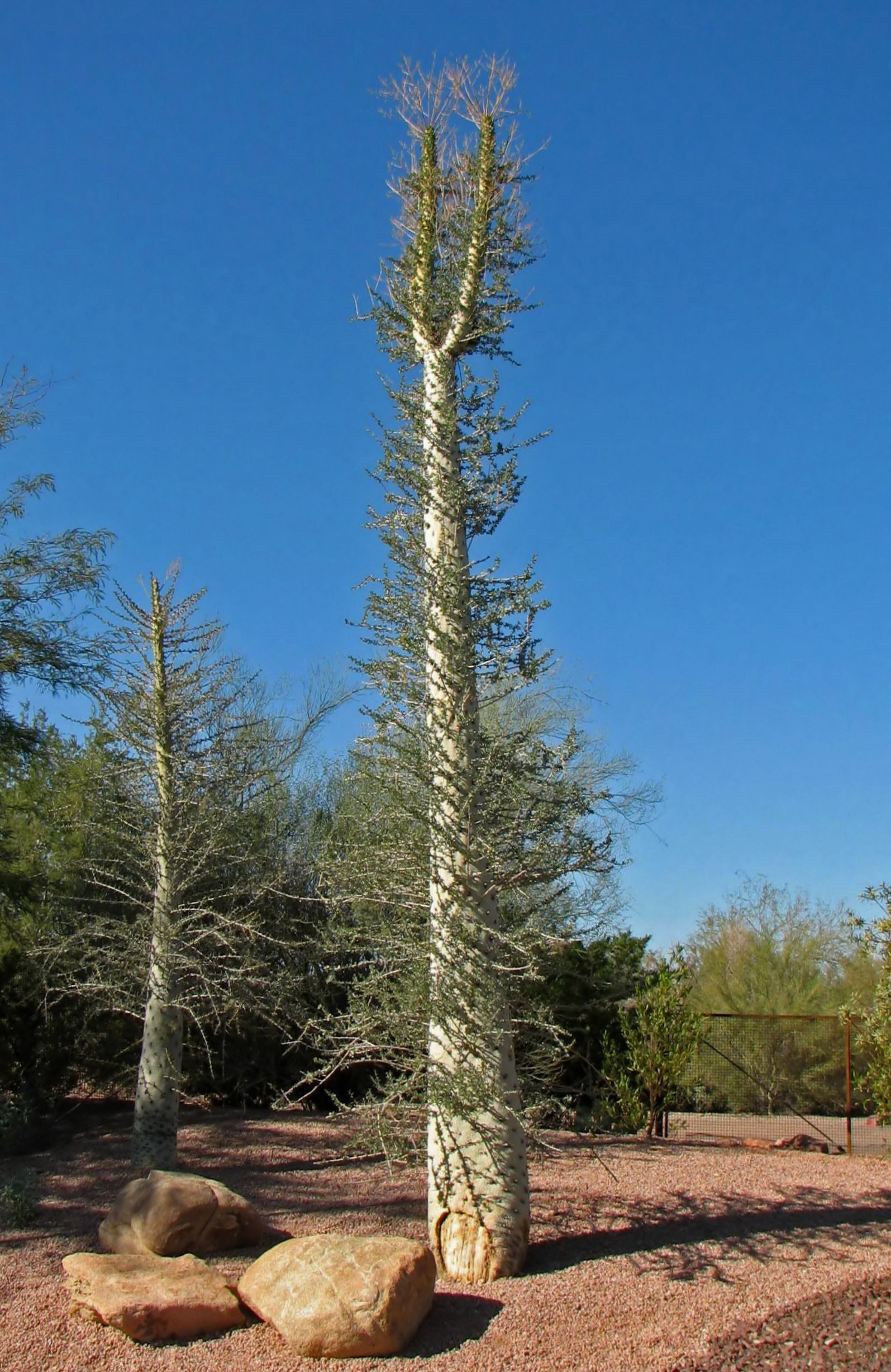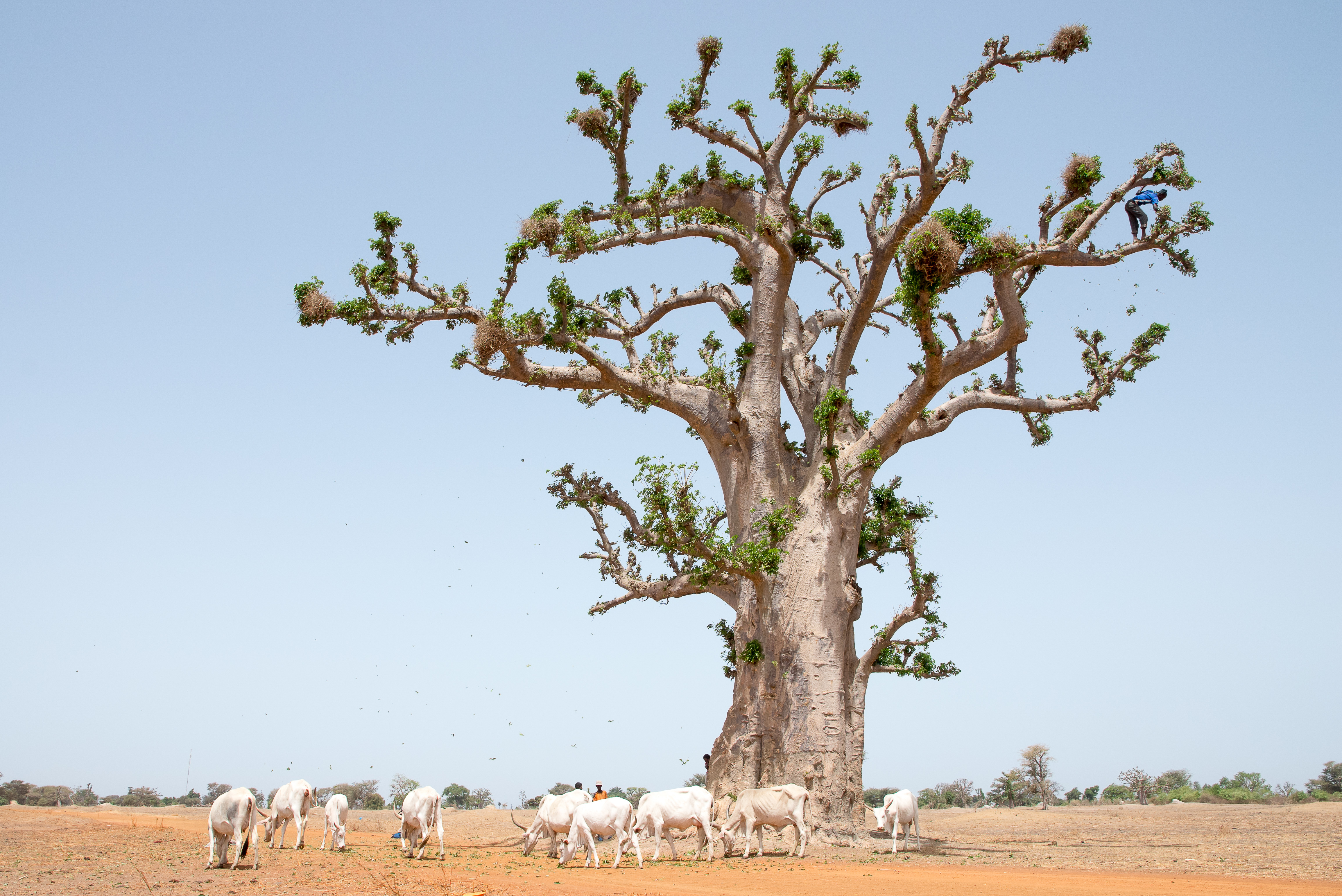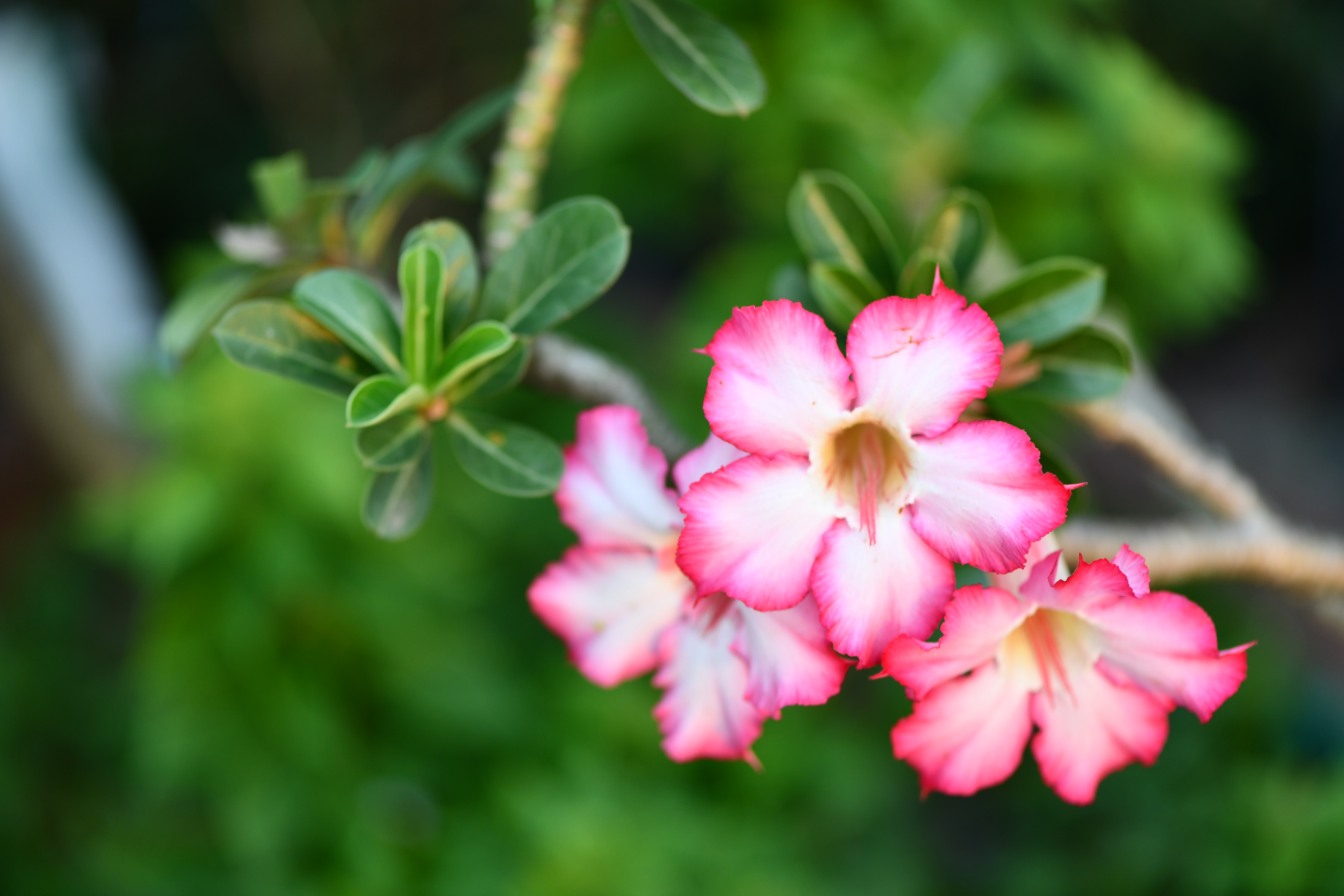|
Pachycaul
Pachycauls are plants with a disproportionately thick Trunk (botany), trunk for their height, and few branches. This can be the product of exceptional primary growth (as with Arecaceae, palms and cycads) or disproportioate secondary growth as with Adansonia. The word is derived from the Greek language, Greek ''pachy-'' meaning thick or stout, and Latin language, Latin ''caulis'' meaning the stem. All of the tree (and treelike) species of cactus are pachycauls, as are most Arecaceae, palms, Cycads and pandans. The most extreme pachycauls are the floodplains, or riverbottom variety of the African Palmyra (Borassus aethiopum) with primary growth up to seven feet (2.1 meters) in thickness, and the Coquito Palm (Jubaea chilensis) with primary growth up to six feet (1.8 meters) thick. The most pachycaulous cycad is Cycas thouarsii at up to five feet (150 centimeters) in diameter. The tallest pachycaul is the Andean Wax Palm (Ceroxylon quindiuense) at up to 220 feet (66 meters). and abo ... [...More Info...] [...Related Items...] OR: [Wikipedia] [Google] [Baidu] |
Pachypodium
''Pachypodium'' is a genus of succulent spine-bearing trees and shrubs, native to Madagascar and Africa. It belongs to the family Apocynaceae. Genus characteristics All ''Pachypodium'' are succulent plants that exhibit, to varying degrees, the morphological characteristics of pachycaul trunks and spinescence. These are the most general features of the genus and can be considered distinguishing characteristics. The pachycaul trunk is a morphologically enlarged trunk that stores water so as to survive seasonal drought or intermittent periods of root desiccation in exposed, dry, and rocky conditions. Whereas there is great variation in the habit of the plant body, all ''Pachypodium'' exhibit pachycaul growth. Variation in habit can range from dwarf flattened plants to bottle shaped shrubs to dendroid-shaped trees. The second general characteristic of ''Pachypodium'' is spinescence, or having spines. The spines come clustered in either pairs or triplets with these clusters ofte ... [...More Info...] [...Related Items...] OR: [Wikipedia] [Google] [Baidu] |
Dendrosicyos
''Dendrosicyos'' is a monotypic genus in the plant family (biology), family Cucurbitaceae. The only species is ''Dendrosicyos socotranus'', the cucumber tree. The species is endemism, endemic to the island of Socotra in Yemen, and is the only species in the Cucurbitaceae to grow in a tree form. The species name was originally spelled ''D. socotrana'', but this is corrected to masculine grammatical gender according to the International Code of Nomenclature for algae, fungi, and plants. Features It has a bulbous trunk and a small crown. It was first described by Isaac Bayley Balfour in 1882. A recent molecular phylogenetic analysis of the family Cucurbitaceae found that the ''Dendrosicyos'' lineage is about twice as old as the island, and thus seems to be an island relic of a progenitor lineage that became extinct on the mainland. The leaves are nearly round, covered with fine bristles, and slightly toothed. The yellow flowers (3 cm), males and females are present on the sam ... [...More Info...] [...Related Items...] OR: [Wikipedia] [Google] [Baidu] |
Adansonia Digitata
''Adansonia digitata'', the African baobab, is the most widespread tree species of the genus ''Adansonia'', the baobabs, and is native to the African continent and the southern Arabian Peninsula (Yemen, Oman). These are long-lived pachycauls; radiocarbon dating has shown some individuals to be over 2,000 years old. They are typically found in dry, hot savannas of sub-Saharan Africa, where they dominate the landscape and reveal the presence of a watercourse from afar. They have traditionally been valued as sources of food, water, health remedies or places of shelter and are a key food source for many animals. They are steeped in legend and superstition. In recent years, many of the largest, oldest trees have died, possibly due to climate change. Common names for the baobab include monkey-bread tree, upside-down tree, and cream of tartar tree. Description African baobabs are trees that often grow as solitary individuals, and are large and distinctive elements of savanna or scrubla ... [...More Info...] [...Related Items...] OR: [Wikipedia] [Google] [Baidu] |
Apocynaceae
Apocynaceae (from ''Apocynum'', Greek for "dog-away") is a family of flowering plants that includes trees, shrubs, herbs, stem succulents, and vines, commonly known as the dogbane family, because some taxa were used as dog poison Members of the family are native to the European, Asian, African, Australian, and American tropics or subtropics, with some temperate members. The former family Asclepiadaceae (now known as Asclepiadoideae) is considered a subfamily of Apocynaceae and contains 348 genera. A list of Apocynaceae genera may be found here. Many species are tall trees found in tropical forests, but some grow in tropical dry (xeric) environments. Also perennial herbs from temperate zones occur. Many of these plants have milky latex, and many species are poisonous if ingested, the family being rich in genera containing alkaloids and cardiac glycosides, those containing the latter often finding use as arrow poisons. Some genera of Apocynaceae, such as '' Adenium'', bleed clea ... [...More Info...] [...Related Items...] OR: [Wikipedia] [Google] [Baidu] |
Campanulaceae
The family Campanulaceae (also bellflower family), of the order Asterales, contains nearly 2400 species in 84 genera of herbaceous plants, shrubs, and rarely small trees, often with milky sap. Among them are several familiar garden plants belonging to the genera '' Campanula'' (bellflower), ''Lobelia'', and ''Platycodon'' (balloonflower). ''Campanula rapunculus'' (rampion or r. bellflower) and ''Codonopsis lanceolata'' are eaten as vegetables. ''Lobelia inflata'' (indian tobacco), '' L. siphilitica'' and '' L. tupa'' (devil's tobacco) and others have been used as medicinal plants. ''Campanula rapunculoides'' (creeping bellflower) may be a troublesome weed, particularly in gardens, while ''Legousia'' spp. may occur in arable fields. Most current classifications include the segregate family Lobeliaceae in Campanulaceae as subfamily Lobelioideae. A third subfamily, Cyphioideae, includes the genus ''Cyphia'', and sometimes also the genera ''Cyphocarpus'', ''Nemacladus'', ''Parishell ... [...More Info...] [...Related Items...] OR: [Wikipedia] [Google] [Baidu] |
Lobelia
''Lobelia'' () is a genus of flowering plants comprising 415 species, with a subcosmopolitan distribution primarily in tropical to warm temperate regions of the world, a few species extending into cooler temperate regions.Huxley, A., ed. (1992). ''New RHS Dictionary of Gardening''. Macmillan . They are known generally as lobelias.''Lobelia''. USDA PLANTS. 
Description The genus ''Lobelia'' comprises a substantial number of large and small annual, perennial and shrubby species, hardy and tender, from a variety of habitats, in a range of colours. Many species appear totally dissimilar f ...[...More Info...] [...Related Items...] OR: [Wikipedia] [Google] [Baidu] |
Cyanea (plant)
''Cyanea'' is a genus of flowering plants in the family Campanulaceae. The name ''Cyanea'' in Hawaiian language, Hawaiian is ''hāhā''. These Hawaiian lobelioids are endemism, endemic to Hawaii with over 90% of ''Cyanea'' species are found only on one island in the Hawaiian chain.Givnish, T. J., et al. (2009)Origin, adaptive radiation and diversification of the Hawaiian lobeliads (Asterales: Campanulaceae).''Proceedings of the Royal Society B: Biological Sciences'' 276(1656), 407-16. They grow in moist and wet forest habitatLammers, T. G. (2004)Five new species of the endemic Hawaiian genus ''Cyanea'' (Campanulaceae: Lobelioideae).''Novon'' 14(1) 84-101. and are largely pollination, pollinated by birds such as the Hawaiian honeycreepers, and the seeds are seed dispersal, dispersed by birds that take the fruits. Most ''Cyanea'' are trees with few branches or none. The inflorescence is a raceme of 4 to 45 flowers which grows from the leaf axils. The fruit is a fleshy Berry (botany ... [...More Info...] [...Related Items...] OR: [Wikipedia] [Google] [Baidu] |
Burseraceae
The Burseraceae are a moderate-sized family of 17-19 genera and about 540 species of flowering plants. The actual numbers differ according to the time period in which a given source is written describing this family. The Burseraceae are also known as the torchwood family, the frankincense and myrrh family, or simply the incense tree family. The family includes both trees and shrubs, and is native to tropical regions of Africa, Asia. Australasia, and the Americas. Just as the family size (in terms of genera and species) differs according to the time period of the study, so, too, does its placement in the higher ranks. Nevertheless, the family is a genetically supported monophyletic group currently and frequently cited within the Sapindales and is recognized as a sister group to the Anacardiaceae. The Burseraceae are characterized by the nonallergenic resin they produce in virtually all plant tissue and the distinctive smooth, yet flaking, aromatic bark.Judd, W.S., Campbell, C.S., ... [...More Info...] [...Related Items...] OR: [Wikipedia] [Google] [Baidu] |
Bursera
''Bursera'' is a genus with about 100 described species of flowering shrubs and trees varying in size up to high. It is the type genus for Burseraceae. The trees are native (often for many species endemic) to the Americas, from the southern United States south through to northern Argentina, in tropical and warm temperate forest habitats. It is named after the 17th-century Danish botanist Joachim Burser. Several Mexican species (such as '' B. aloexylon'' and '' B. delpechiana'') produce a type of wood known as ''linaloe'' (from Mexican Spanish , from Latin , ). They contain the aromatic oil linalool. A number of species from tropical Asia were once included in this genus, but are now treated in the genus ''Protium''. Species list sources : Formerly placed here *'' Canarium paniculatum'' (Lam.) Benth. ex Engl. (as ''B. paniculata'' Lam.) *''Protium serratum'' (Wall. ex Colebr.) Engl. (as ''B. serrata'' Wall. ex Colebr.) Uses * Caranna, medicinal gum Gallery Image:Bur ... [...More Info...] [...Related Items...] OR: [Wikipedia] [Google] [Baidu] |
Asteraceae
The family Asteraceae, alternatively Compositae, consists of over 32,000 known species of flowering plants in over 1,900 genera within the order Asterales. Commonly referred to as the aster, daisy, composite, or sunflower family, Compositae were first described in the year 1740. The number of species in Asteraceae is rivaled only by the Orchidaceae, and which is the larger family is unclear as the quantity of extant species in each family is unknown. Most species of Asteraceae are annual, biennial, or perennial herbaceous plants, but there are also shrubs, vines, and trees. The family has a widespread distribution, from subpolar to tropical regions in a wide variety of habitats. Most occur in hot desert and cold or hot semi-desert climates, and they are found on every continent but Antarctica. The primary common characteristic is the existence of sometimes hundreds of tiny individual florets which are held together by protective involucres in flower heads, or more technicall ... [...More Info...] [...Related Items...] OR: [Wikipedia] [Google] [Baidu] |
Dendrosenecio
''Dendrosenecio'' is a genus of flowering plants in the Asteraceae, sunflower family. It is a segregate (taxonomy), segregate of ''Senecio'', in which it formed the subgenus ''Dendrosenecio''. Its members, the giant groundsels, are native to the higher altitude zones of ten mountain groups in equatorial East Africa, where they form a conspicuous element of the flora. Description They have a giant rosette habit, with a terminal leaf rosette at the apex of a stout woody stem. When they bloom, the flowers form a large terminal inflorescence. Concomitantly, two to four lateral branches are normally initiated. As a result, old plants have the appearance of candelabras the size of telephone poles, each branch with a terminal rosette. Species ''Dendrosenecio'' varies geographically between mountain ranges, and altitudinally on a single mountain. There has been disagreement among botanists as to which populations of ''Dendrosenecio'' warrant recognition as species, and which should be r ... [...More Info...] [...Related Items...] OR: [Wikipedia] [Google] [Baidu] |
Adenium
''Adenium'' is a genus of flowering plants in the family Apocynaceae first described as a genus in 1819. It is native to Africa and the Arabian Peninsula. Cultivation and uses ''Adenium obesum'' is grown as a houseplant in temperate and tropical regions. Numerous hybrids have been developed. Adeniums are appreciated for their colorful flowers, but also for their unusual, thick caudices. They can be grown for many years in a pot and are commonly used for bonsai. Because seed-grown plants are not genetically identical to the mother plant, desirable varieties are commonly propagated by grafting. Genetically identical plants can also be propagated by cutting. However, cutting-grown plants do not tend to develop a desirable thick caudex as quickly as seed-grown plants. The sap of ''Adenium boehmianum'', '' A. multiflorum'', and '' A. obesum'' contains toxic cardiac glycosides and is used as arrow poison throughout Africa for hunting large game. Classification The genus ''Adenium ... [...More Info...] [...Related Items...] OR: [Wikipedia] [Google] [Baidu] |



.jpg)
